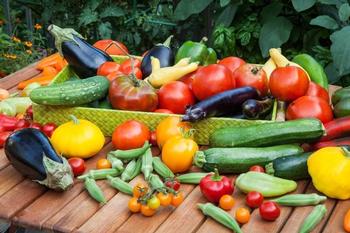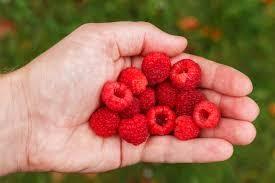Harvesting summer crops for optimal taste and texture
-
Time to Get Picky
Each fruit and vegetable has an ideal window of opportunity for harvesting the best quality food. For some produce the harvest window is long. Others can go from sweet and tender to tough, starchy, pithy, mushy, or bitter virtually overnight. Photo: Courtesy of UC Regents
Photo: Courtesy of UC RegentsMost seed packets and nursery plant stakes tell us the days for maturity of our veggies. But counting the days cannot be relied upon since growth is determined by several factors, including available water, the weather, and the quality of the soil, all of which can vary year to year or even day to day. Fruit trees have their usual season but that, too, can be affected by the same variables.
A good way to keep up with harvesting is to be prepared with hand pruners, a bucket or bowl, and grocery bags each time you head out to the vegetable patch. In other words, always assume that something will be ready for picking. With some types of vegetables, such as beans, summer squash, and cucumbers, picking keeps production going, so the more you pick, the better the yields over the growing season.
It’s generally best to pick your veggies early in the day before the plants are heat-stressed. Overnight, veggies can regain moisture they lost during the day, and the starches formed in the day may be converted to sugars in the cool evening. This is especially important when harvesting leafy greens like lettuce, spinach, kale, or chard to better assure crispness. Look at the crop to see the clues each variety gives you that it is time to harvest. Check your garden often to catch crops at their peak ripeness.
Most vegetables taste best when they have been allowed to ripen on the plant. Some, such as squash, cucumbers, sweet corn, peas, and beans, achieve peak quality before the vegetable is fully mature. Occasionally gardeners fall into the bigger-is-better trap and let the crops stay on the plant too long. Anyone who has grown zucchini, cucumbers, or radishes knows that the biggest vegetable is not nearly the best. Frequent picking prolongs the harvest. The goal of a plant is to reproduce. If its fruit is allowed to fully mature on the plant, there is no need for it to continue to flower. Crop production could halt.
Pick fruits when the dew has dried but before it gets hot. Many fruits do not store well, so they are best picked when you want to eat them. Generally, allow the fruit to ripen fully on the tree, as they will not ripen after being picked. An exception is most pears, which should be harvested while they are still hard and not yet fully ripe (except Asian pears, which need to ripen on the tree). Pears will continue to ripen and soften after picking from a few days to a few weeks. Apples sometimes need to be tasted to determine ripeness. They should be easy to separate from the tree if they are ready. Harvest apricots, peaches, and plums when the fruit begins to soften, is fully colored, and can be easily separated from the tree. Handle them carefully to prevent bruising.
Berries are best picked in the morning when the fruit is cool. Pick them fully ripe. They should easily separate from the plant if they are fully ripe. Handle them with care because they are easily damaged. Harvesting berries in the wild is often fun, and you can get some yummy free fruit. However, these wild plants are not necessarily getting the water needed to yield luscious, sweet fruit so taste test a few before laboring to fill a bucket.
It takes practice and some trial and error to develop the knack for picking vegetables at their peak. Despite best intentions, careful observation, and regular harvesting, most gardeners will occasionally miss spotting a squash until it is behemoth sized and too seedy to eat. What to do with these specimens? You can chop them up and put them in a hot compost pile or worm bin, where they’ll contribute to feeding your soil at a future date. Or you can repurpose them as objets d’art, placing them on a mantel or dining table. They make great conversation pieces.
Original articles by Jennifer Kinion and Dot Zanotti Ingels for the Marin IJ
Edited for the Leaflet by Jane Scurich


